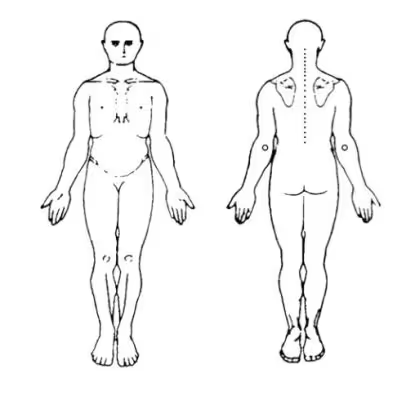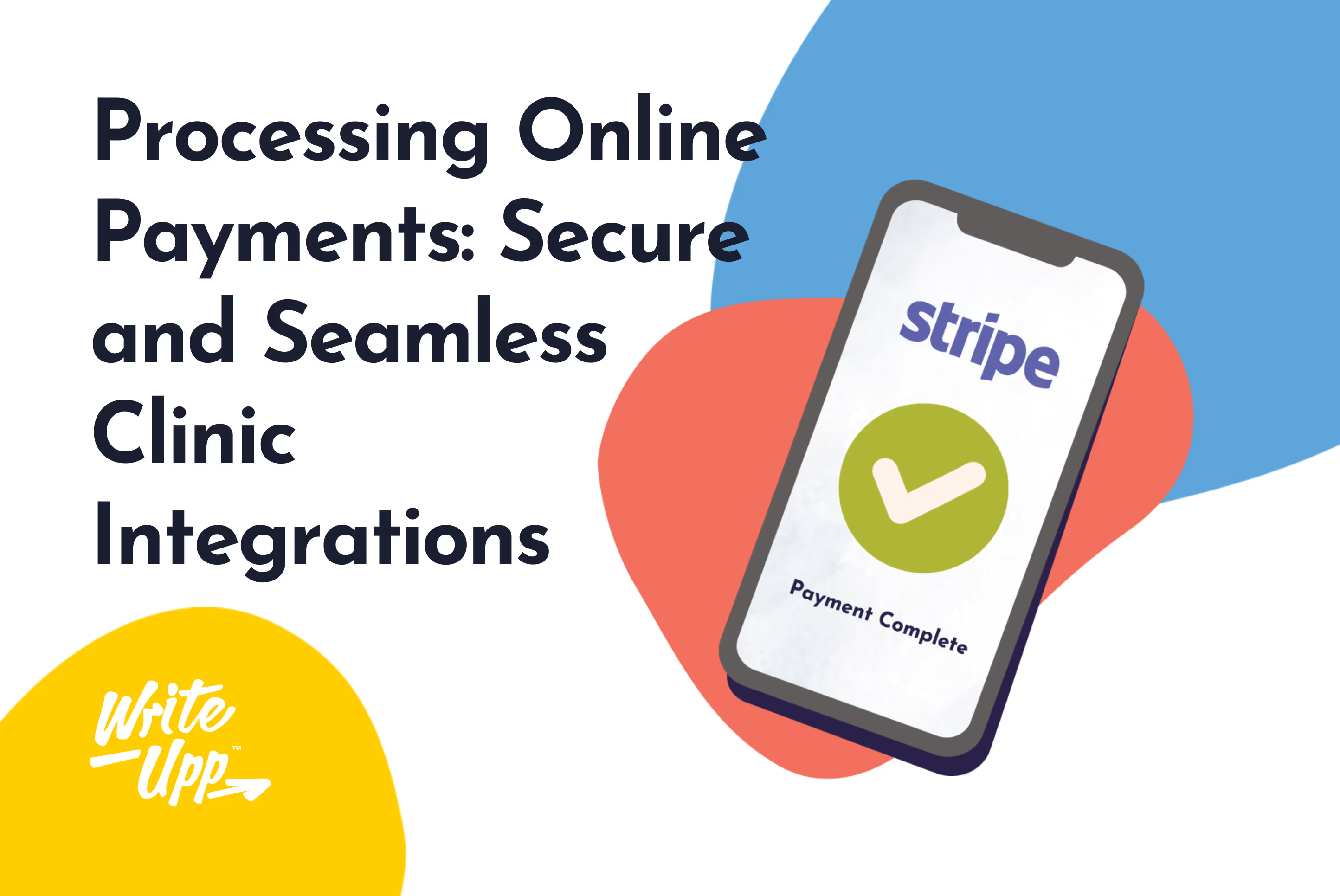As physiotherapists, you are the frontline warriors in restoring movement, enhancing mobility, and alleviating pain for countless patients. The heart of your practice? Effective and efficient use of physical therapy equipment.
Your arsenal is vast and varied, from staple items like resistance bands and exercise balls to advanced modalities like electrical stimulation machines. But how well do you truly know your tools? In an evolving field as dynamic as this, staying up-to-date with the latest equipment and understanding how best to use them is crucial.
This comprehensive guide will delve into the 23 most commonly used equipment that every physiotherapist should be familiar with—whether you’re a seasoned professional or a budding practitioner.
This list is a refresher and resource, breaking down each tool's purpose, effectiveness, and optimal usage. From classic staples to the latest innovations, we will walk through everything you need to ensure you’re harnessing the full potential of your equipment to foster the best possible patient outcomes.
So let’s dive in and explore the indispensable equipment that shapes your day-to-day interventions as a physiotherapist.
TL:DR? Check out the video here:
https://youtu.be/E5lAq2o6TWA?si=74e2-WbTyzvWhHlH
23 Recommended Equipment for Physical Therapy
Physiotherapy is a specialised field that uses various equipment to help patients recover from injuries, improve their strength, and enhance their mobility. Here are the 23 most commonly used pieces of equipment in physical therapy:
1. Treadmill
Treadmills are invaluable tools for physiotherapists, offering a controlled environment to assess, treat, and rehabilitate their clients with mobility and musculoskeletal issues. They allow for precise adjustments in speed, incline, and resistance, enabling therapists to tailor exercise protocols to each patient’s needs and capabilities.
By simulating various walking or running conditions, treadmills help patients regain strength, improve balance, and enhance functional mobility in a safe and measured manner. They also enable physiotherapists to monitor patients' gait patterns and biomechanics, facilitating real-time feedback and adjustments to optimise rehabilitation outcomes.
For clients, treadmills provide a convenient and effective means of exercise that can be easily adapted as they progress, promoting sustained improvements in health and quality of life.
2. Stationary Bicycle
Stationary bikes offer a low-impact solution to improve cardiovascular health, increase muscular strength, and enhance joint mobility.
For physiotherapists, these bikes provide a versatile modality to design individualised treatment plans, catering to varying levels of patient ability and recovery goals. They enable therapists to effectively prescribe and control exercise intensity and duration, allowing for the safe progression of activity levels.
For clients, stationary bikes are an excellent option for rehabilitation, particularly for people with lower limb, back, or weight-bearing restrictions, as they reduce strain on joints while promoting improved circulation and muscle tone.
3. Resistance Bands
Resistance bands offer versatility, portability, and affordability in crafting effective rehabilitation programs. These elastic bands come in varying strengths and lengths, enabling therapists to customise resistance levels precisely to a patient’s capabilities and progress.
For clients, resistance bands facilitate functional, movement-based exercises that mirror daily activities, improving strength, flexibility, balance, and coordination. They are particularly beneficial for those who need a lower-impact alternative to weights or machines.
For physiotherapists, resistance bands are instrumental in developing client-centred exercise routines that can easily be continued at home, encouraging patient adherence to their rehabilitation plan. In this way, resistance bands empower clients to actively participate in their recovery process, making consistent and sustainable progress more attainable.
4. Dumbbells
Dumbbells with varying weights allow for individualised, progressive resistance training, which is critical for rebuilding muscle strength, improving joint stability, and enhancing functional performance after injury or surgery.
For clients, dumbbells offer a simple and accessible means to engage in targeted exercises tailored to their needs and goals. They enable patients to work bilaterally or unilaterally, which is particularly beneficial when addressing muscle imbalances or focusing on one side of the body.
For physiotherapists, dumbbells provide a practical, hands-on way to teach proper lifting techniques, postural alignment, and movement patterns, encouraging safe and effective exercise habits in their clients' path to recovery.
5. Exercise Balls
Exercise balls, also known as stability balls, are multifaceted tools in physiotherapy that offer unique benefits for therapists and clients. They are designed to engage multiple muscle groups simultaneously, promoting strength, balance, and proprioception.
For physiotherapists, exercise balls provide a versatile platform to develop individualised treatment plans, as they can be used to challenge patients in varying positions, from sitting to planking, and for diverse exercises, from core strengthening to flexibility work.
For clients, these balls introduce an element of instability that encourages the engagement of stabilising muscles, which is key in preventing re-injury and improving functional movement patterns. Exercise balls are also lightweight and portable, making them an excellent option for clients to continue their rehabilitation exercises at home, empowering them to take charge of their recovery journey.
6. Balance Boards
Balance boards challenge and improve an individual's stability, proprioception, and coordination.
For physiotherapists, these boards offer a dynamic and adjustable platform to safely assess and address deficits in a patient’s balance and functional movement, crucial components in recovering from various injuries or surgeries. They enable therapists to progressively increase the difficulty of exercises, helping clients regain confidence and control in their movements.
For patients, balance boards provide a fun and engaging way to improve their strength and stability. Regular use can lead to enhanced core strength, better posture, and reduced risk of falls, making balance boards an integral tool for clients of all ages and fitness levels in their journey towards improved health and independence.
7. Foam Rollers
Foam rollers are a valuable resource for teaching self-myofascial release techniques, which can help to alleviate muscle tightness, improve flexibility, and reduce pain.
These tools enable therapists to guide patients in performing effective self-care between sessions, promoting continued progress and empowering clients to participate in their recovery actively.
Foam rollers offer a convenient and cost-effective way to manage pain and maintain muscle health at home or on the go. Regular foam rollers can help break up adhesions and scar tissue, improve blood flow, and facilitate better movement patterns, contributing to more efficient and effective rehabilitation and overall well-being.
8. Therabands
Therabands, or resistance bands, are an essential tool in physiotherapy, known for their versatility, portability, and effectiveness in facilitating rehabilitative exercises.
For physiotherapists, Therabands provide a means to tailor resistance training to each patient’s specific needs and abilities, enabling precise control over the tension and challenge of exercises. This customisation allows for the safe and progressive strengthening of muscles without adding undue stress to joints.
Therabands are convenient and user-friendly for clients, allowing them to continue prescribed exercises at home, promoting consistent engagement with their rehabilitation program. They are lightweight and compact, making it easy for patients to integrate them into daily routines, whether at home, work, or travelling, thus empowering them to take a proactive approach to their health and recovery.
9. Pedal Exercisers
Pedal exercisers are compact and portable devices designed to offer a convenient and efficient way to engage in low-impact cardiovascular and resistance exercise.
These tools are invaluable for aiding in rehabilitating patients with lower extremity weaknesses or mobility limitations, as they allow for a controlled and focused approach to building strength and improving circulation without requiring significant space or setup.
Pedal exercisers can be used while seated, making them an excellent option for clients with balance issues or those who cannot stand for prolonged periods. Furthermore, they are practical for home use, empowering patients to maintain and progress in their rehabilitation journey and enhancing their independence and overall quality of life.
10. Hand Grippers
Hand grippers are specialised tools designed to improve hand and forearm strength, which is essential for many daily activities.
Hand grippers provide a straightforward and measurable way to assess and progress a client's grip strength, an important aspect of overall hand function. They enable therapists to prescribe specific exercises to help patients regain strength after injuries, surgeries, or conditions like carpal tunnel syndrome or arthritis.
For clients, hand grippers are a portable and convenient tool that can be incorporated easily into daily routines, promoting consistent engagement with their rehabilitation plan. Regular use can lead to improved hand function, increased dexterity, and reduced pain, empowering individuals to regain the ability to perform essential tasks with ease and confidence, thereby enhancing their quality of life.
11. Parallel Bars
Parallel bars are a fundamental tool in rehabilitation settings, designed to provide stability and support while patients practice walking, balance exercises, and functional movements.
These bars offer a safe and controlled environment to assess and progress a patient's mobility, balance, and weight-bearing status after an injury or surgery. They enable therapists to stand alongside clients, offering guidance, adjusting alignment, and providing physical support during this critical recovery phase.
Parallel bars offer a reassuring and secure framework, allowing clients to regain confidence in their movement abilities. They provide an essential stepping stone for patients transitioning from limited mobility towards walking independently.
12. Adjustable Tables
Adjustable tables can be adjusted in height and position, allowing therapists to work at ergonomically suitable levels, reducing strain on their bodies during hands-on treatment.
This adaptability ensures they can deliver precise and effective care, whether mobilising a joint, facilitating a stretch, or performing manual therapy techniques.
For clients, adjustable tables provide a comfortable and secure surface to receive treatment. They can be lowered or raised to accommodate individuals with mobility issues, making it easier for patients to get on and off the table.
13. Cuff Weights
Cuff weights are versatile and effective tools used in physiotherapy to add resistance to various exercises, targeting specific muscle groups and functional movements.
These weights are invaluable for tailoring rehabilitation programs to individual patient needs, allowing for precise strength training progression as clients regain function. The design of cuff weights makes them easy to securely attach to wrists or ankles, enabling focused and controlled movements during exercise routines.
Cuff weights provide a comfortable and efficient way to intensify exercises without needing to grip a weight, which is especially beneficial for those with hand or grip strength limitations. Regular use of cuff weights can improve muscle tone, joint stability, and functional mobility, empowering patients to progress steadily towards their recovery and health goals.
14. Suspension Training Systems
Suspension training systems, such as TRX, are innovative tools that leverage body weight and gravity to enable various exercises. These systems offer a versatile and space-efficient means to help clients improve strength, balance, flexibility, and core stability.
They allow therapists to easily modify exercises, making them suitable for individuals of all fitness levels and adapting to each client's specific needs and progress. For patients, suspension training systems provide a unique, engaging, and highly effective approach to rehabilitation and fitness.
These exercises encourage functional movement patterns, essential for day-to-day activities and sport-specific training. Importantly, because suspension training emphasises controlled, smooth movements, it helps clients to retrain their bodies in a safe and challenging way.
15. Balance Discs
Balance discs are versatile, inflatable tools that add an element of instability to exercises, thereby stabilising muscles and promoting proprioception. They are instrumental in crafting targeted rehabilitation programs that improve balance, core strength, and functional mobility.
Balance discs allow therapists to incrementally increase the challenge of exercises, meeting clients at their current ability level and progressing as their strength and stability improve.
For clients, balance discs are a compact and accessible means to continue balance training at home. Balance discs can reduce the risk of falls, improve postural control, and enhance performance in daily activities or athletic pursuits.
16. Pulley Systems
Pulley systems are a staple in rehabilitation settings, offering a unique and effective way to improve range of motion, strength, and functional ability.
These systems enable the application of controlled, consistent resistance to various exercises, allowing for precise tailoring of rehabilitation programs to each client’s needs and capabilities.
Pulleys allow therapists to isolate specific muscle groups, facilitate active-assisted movements, and modify exercise intensity in real time, ensuring that each session is as effective and safe as possible.
17. Therapeutic Putty
Therapeutic putty is used in hand and upper extremity rehabilitation. It provides a malleable and resistance-based medium for designing various hand-strengthening exercises.
Putty can enhance grip strength, improve dexterity, and increase finger and hand flexibility, allowing therapists to tailor activities to each patient's needs and progress.
Therapeutic putty offers an engaging and tactile way to perform exercises, often making rehabilitation more enjoyable and motivating. It is portable and convenient, enabling patients to continue their exercises at home or work, promoting consistent engagement with their rehabilitation plan.
18. Ankle and Wrist Weights
Ankle and wrist weights add resistance to exercises, enhancing strength training and rehabilitation programs.
They enable precise tailoring of resistance to each client's needs and capabilities, allowing for the progressive strengthening of specific muscle groups without bulky equipment. They can be particularly effective in retraining functional movement patterns by adding load to activities that mimic daily tasks.
19. Ultrasound Machines
Ultrasound machines in physiotherapy utilise sound waves to promote tissue healing, reduce inflammation, and alleviate pain.
They are invaluable for precisely targeting specific treatment areas, enabling the delivery of controlled and focused therapy that penetrates deep into the tissues without causing discomfort. The adjustable settings on these machines allow therapists to tailor the treatment to each patient's unique condition and tolerance, enhancing the effectiveness of each session.
Ultrasound therapy can offer significant relief from pain and accelerate the healing process, often without the need for medications. It is a non-invasive and typically pain-free treatment option, making it a comfortable and appealing choice for many patients.
20. Electrical Stimulation Devices
Electrical stimulation devices use electrical currents to stimulate muscles or nerves to relieve pain, reduce inflammation, and promote healing. They offer a targeted, customisable approach to treatment, enabling precise control over the intensity, frequency, and duration of stimulation, which can be tailored to each patient's unique condition and tolerance.
Electrical stimulation devices allow therapists to activate specific muscle groups, improve muscle tone, and facilitate muscle re-education following injury or surgery. Electrical stimulation can provide significant pain relief and accelerate the healing process, serving as a non-invasive, drug-free treatment option for clients.
Regular electrical stimulation as part of a comprehensive treatment plan can empower patients to regain function, reduce reliance on pain medications, and progress more rapidly towards recovery.
21. Vibration Plates
Vibration plates are innovative fitness devices that utilise oscillations to stimulate muscle contractions, promoting strength, balance, and flexibility.
For physiotherapists, these plates offer a versatile and efficient means to engage a patient's muscles in a low-impact manner. They allow therapists to adapt exercises for various fitness levels and are particularly useful for patients who may be limited in traditional weight-bearing exercises.
Vibration plates can provide an effective and time-efficient way to improve muscle tone, bone density, and circulation. Vibrational therapy also helps to reduce pain and stiffness, making it a valuable tool for those with chronic pain or arthritis. Moreover, the plates can stimulate proprioceptive training, which is fundamental for improving balance and preventing falls, especially in older adults.
22. Heat Packs
Heat packs relax tight muscles, increase tissue extensibility, and enhance blood circulation to a specific area.
They are invaluable for preparing patients for manual therapy or exercise, as they help to soften and relax the targeted muscles and connective tissues, making subsequent treatments more effective and comfortable for the patient.
Heat packs enable therapists to optimise the conditions for successful stretching, mobilisation, and strengthening exercises. They are easy to use and can significantly alleviate discomfort associated with arthritis, muscle spasms, and chronic soft tissue injuries.
23. Nebuliser Equipment
Nebuliser equipment is used to administer medications as a mist inhaled directly into the lungs, making it an essential tool for treating various respiratory conditions.
For physiotherapists specialising in respiratory care, nebulisers are a crucial component of treatment protocols for patients with chronic respiratory diseases such as asthma or chronic obstructive pulmonary disease (COPD).
They enable therapists to deliver medications efficiently and effectively, allowing for targeted treatment of the airways and lungs.
Practice Management Software: Another Tool to Add to Your Arsenal
If you run your own practice, up your game by using private practice software for Physiotherapists.
WriteUpp is great for sole physiotherapists and larger multi-location clinics. You can view your bookings, clients’ appointment history, and upcoming appointments. The software will automatically send SMS and email reminders to your clients so no one misses an appointment.
Creating and annotating note templates has saved physiotherapists hours and improved the quality of their note-taking. What’s more, you can use our pre-built note templates to simplify the process.
You can upload body images with the ability to annotate, add your own note templates to use at every session, and use our library of specialised physio note templates whenever you need to.

Use Physitrack? Physitrack is scientifically proven to increase home exercise adherence and patient confidence, and you can use it seamlessly alongside WriteUpp:
- Prescribe exercise programs straight from WriteUpp
- Assigning the program in Physitrack will automatically save to your client’s record
- Data integrity between your platforms
Plus: Get an exclusive discount with Physitrack if you are a WriteUpp user!
Practice management software will free up your wasted time so you can spend more time building your practice, attracting more clients and generating more income.
If you have any questions or want to chat about what an integrated practice management solution could do for you and your new practice, grab us for a live chat.
The button is just there in the bottom right corner of your screen.



Join over 50,000 clinicians that we've helped using WriteUpp
Start my free trial






